
The Monumenta Estoniae Antiquae is an academic publication series of Estonian folklore, including folksongs in trochaic verse form (regilaul), legends, proverbs, riddles and folk tales. [1]

The Monumenta Estoniae Antiquae is an academic publication series of Estonian folklore, including folksongs in trochaic verse form (regilaul), legends, proverbs, riddles and folk tales. [1]
Interest in Estonian folklore began at the beginning of the 19th century. The Learned Estonian Society was established in 1839 as the central organisation for the collection and study of Estonian folklore. It was this society that coordinated the compilation of the Estonian epic Kalevipoeg, begun by Friedrich Robert Faehlmann and completed by Friedrich Reinhold Kreutzwald.
In 1843 Kreutzwald initiated the idea of the systematic collection of Estonian folklore. Alexander Heinrich Neus , under the auspices of the Society of Estonian Literati (Eesti Kirjameeste Selts), founded in 1842, published a three volume anthology of Estonian folksongs in 1852. This three volume set of some 1,300 songs is considered the first scholarly publication. [2]
Soon after Dr. Jakob Hurt assumed the presidency of the Estonian Literati Society in 1872, a project was initiated for the systematic collection of folklore across Estonia. Both collecting and editing was coordinated by Jakob Hurt, organising around 1,400 volunteer collectors through appeals, through the press, brochures and personal correspondence. Hurt had planned the publication of a six volume series to be called the "Monumenta Estoniae Antiquae".
Between 1875 and 1886 two volumes of folksongs were published under the serial title Vana Kannel, (in German, Alte Harfe). Each volume contained the total material from one parish (kihelkond), thus establishing a principle of geographical and dialectal, rather than thematic, unity. Vana Kannel I gathered up the songs of the Põlva Parish in south-eastern Estonia, and volume II included those of Kolga-Jaani in central Estonia. Hurt was about to complete a third volume, the songs of the Viljandi Parish in central Estonia, but difficulties of publishing and the continual inflow of new material intervened.
Between 1904 and 1907, under the auspices of the Finnish Literature Society, Hurt published a three volume series of songs (Setukeste laulud) from the Setumaa district in southern Estonia. Later in 1907 Jakob Hurt died.
During the 1930s, the Estonian Folklore Archives revived Hurt's original project and published volumes III and IV of Vana Kannel in 1938 and 1941 respectively. Edited by Herbert Tampere, the third volume contains songs of Kuusalu Parish and the fourth volume songs of Karksi Parish. A fifth volume containing songs from Muhu island was under preparation, however World War II intervened. At that point songs from only four parishes and Setumaa, out of a total of 112 parishes, were in print.
During the Soviet period, the Monumenta Estoniae Antiquae project was revived in the mid-1950s, with an additional 40 volumes planned. The plan was to publish a volume on the Haljala parish on the island of Saaremaa in 1960, then publish one volume per year for the next 40 years through the joint efforts of the Museum of Literature and Tartu University. However, nothing came of that plan until 1985, when Vana Kannel 5 (Mustjala parish) was published. Kannel 6 (Haljala parish) was published in 1989. On the resumption of independence, volumes 7 (Kihnu parish) and 8 (Jõhvi and Iisaku parishes) were published in 1997 and 1999 respectively.
The recorded history of music in Estonia dates back as far as the 12th century.
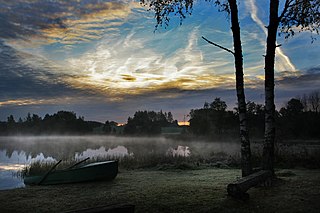
Võru County is a county in Southern Estonia. It is bordered by Valga County and Põlva County and is the only Estonian county bordering two countries - Latvia in the south and Russian Federation in the east.
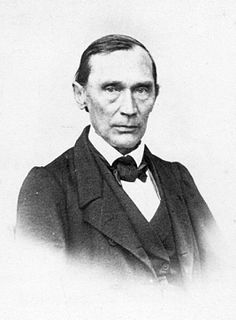
Friedrich Reinhold Kreutzwald was an Estonian writer who is considered to be the father of the national literature for the country. He is the author of Estonian national epic Kalevipoeg.

Carmina Gadelica is a compendium of prayers, hymns, charms, incantations, blessings, literary-folkloric poems and songs, proverbs, lexical items, historical anecdotes, natural history observations, and miscellaneous lore gathered in the Gaelic-speaking regions of Scotland between 1860 and 1909. The material was recorded, translated, and reworked by the exciseman and folklorist Alexander Carmichael (1832–1912).
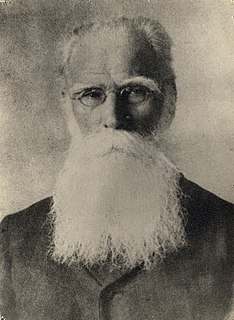
Krišjānis Barons was a Latvian writer who is known as the "father of the dainas" thanks largely to his systematization of the Latvian folk songs and his labour in preparing their texts for publication in Latvju dainas. His portrait appeared on the 100-lat banknote prior to the Lat being replaced by the Euro in 2014, his being the only human face of an actual person on modern Latvian currency. Barons was very prominent among the Young Latvians, and also an important writer and editor.

Kannel is an Estonian plucked string instrument (chordophone) belonging to the Baltic box zither family known as the Baltic psaltery along with Finnish kantele, Latvian kokles, Lithuanian kanklės, and Russian gusli. The Estonian kannel has a variety of traditional tunings. In Estonia, studying the kannel has made a resurgence after some years of decline.
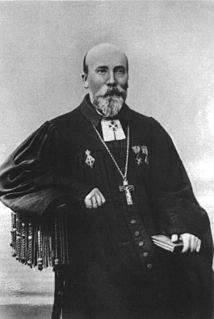
Jakob Hurt was a notable Estonian folklorist, theologian, and linguist. With respect to the last, he is perhaps best known for his dissertation on "pure" -ne stem nouns.

The Magic Swan Geese or Гуси-лебеди is a Russian fairy tale collected by Alexander Afanasyev in Narodnye russkie skazki, numbered 113.

The Estonian Age of Awakening is a period in history where Estonians came to acknowledge themselves as a nation deserving the right to govern themselves. This period is considered to begin in the 1850s with greater rights being granted to commoners and to end with the declaration of the Republic of Estonia in 1918. The term is sometimes also applied to the period around 1987 and 1988.
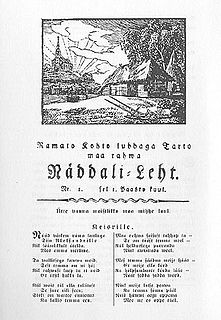
Estophilia refers to the ideas and activities of people not of Estonian descent who are sympathetic to or interested in Estonian language, Estonian literature or Estonian culture, the history of Estonia and Estonia in general. Such people are known as Estophiles. The opposite of Estophilia is Estophobia.
Estonian literature is literature written in the Estonian language The domination of Estonia after the Northern Crusades, from the 13th century to 1918 by Germany, Sweden, and Russia resulted in few early written literary works in the Estonian language. The oldest records of written Estonian date from the 13th century. Originates Livoniae in Chronicle of Henry of Livonia contains Estonian place names, words and fragments of sentences. The Liber Census Daniae (1241) contains Estonian place and family names. The earliest extant samples of connected Estonian are the so-called Kullamaa prayers dating from 1524 and 1528. The first known printed book is a bilingual German-Estonian translation of the Lutheran catechism by S.Wanradt and J. Koell (1535). For the use of priests an Estonian grammar was printed in German in 1637. The New Testament was translated into southern Estonian in 1686. The two dialects were united by Anton Thor Helle in a form based on northern Estonian. Writings in Estonian became more significant in the 19th century during the Estophile Enlightenment Period (1750–1840).
The earliest mentioning of Estonian singing dates back to Saxo Grammaticus' Gesta Danorum. Saxo spoke of Estonian warriors who sang at night while waiting for a battle. Henry of Livonia at the beginning of the 13th century described Estonian sacrificial customs, gods and spirits. In 1578 Balthasar Russow described the celebration of midsummer (jaanipäev), the St. John's Day by Estonians. In 1644 Johann Gutslaff spoke of the veneration of holy springs and J.W. Boecler described Estonian superstitious beliefs in 1685. Estonian folklore and beliefs including samples of folk songs appear in Topographische Nachrichten von Liv- und Estland by August W. Hupel in 1774–82. J.G von Herder published seven Estonian folk songs, translated into German in his Volkslieder in 1778 and republished as Stimmen der Völker in Liedern in 1807.
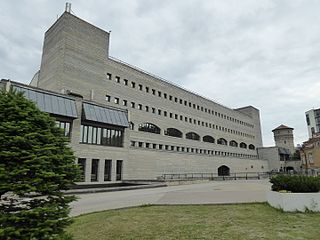
The National Library of Estonia is a national public institution in Estonia, which operates pursuant to the National Library of Estonia Act. It was established as the parliamentary library of Estonia on December 21, 1918.
The Learned Estonian Society is Estonia's oldest scholarly organisation, and was formed at the University of Tartu in 1838. Its charter was to study Estonia's history and pre-history, its language, literature and folklore.
The Society of Estonian Literati was an influential association of Estonian intellectuals based in Tartu between the years 1871 and 1893.

The Estonian Literary Museum, is a national research institute of the Ministry of Education and Research of the Republic of Estonia. Its mission is to improve the cultural heritage of Estonia, to collect, preserve, research and publish the results. The current Head of the Estonian Literary Museum is Urmas Sutrop.

Olof Åhlström was a Swedish civil servant, composer and music publisher.
Muhammad Mansuruddin was a Bengali author, literary critic, essayist, lexicographer and biographer from Bangladesh. He was an authority on folklore and was famous for a huge collection of age-old folk songs, mostly anthologised in thirteen volumes under the title Haramoni. In recognition of his lifelong contribution to folklore collection and research, the Rabindra Bharati University awarded him D.Litt. degree in 1987.
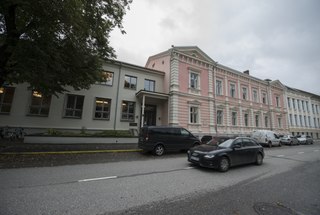
The Estonian Folklore Archives (EFA) is the central folklore archives in Estonia. The Archives functions currently as the subdivision of the Estonian Literary Museum but it was established in 1927 as the division of the Estonian National Museum. The current Head of the Archives is Dr. Risto Järv.
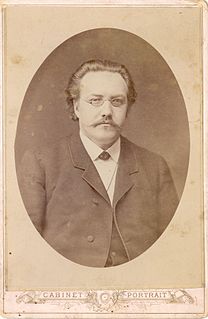
Karl August Hermann was an Estonian writer, publicist, linguist and composer.